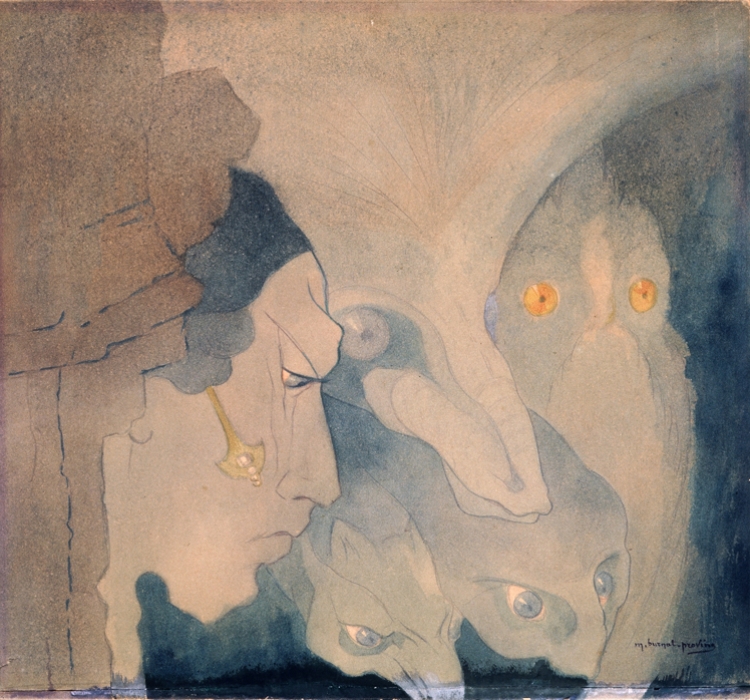Burnat-Provins, Marguerite

Les êtres de l’abîme, Oram Caris Bluterba Sobra
Marguerite Burnat-Provins, "Les êtres de l’abîme, Oram Caris Bluterba Sobra", 1921, water colour and lead pencil on cardboard, 42 x 45,5 cm, photo : Claude Bornand, Collection de l’Art Brut, Lausanne
Author
Burnat-Provins, Marguerite,
(1872 – 1952), Switzerland
Audio biography
Biography
Marguerite Burnat-Provins (1872-1952) was born in Arras, in northern France. She was the eldest of seven children born to prosperous, cultured, middle class family. Indeed, her father encouraged her keen interest in writing and painting. In 1891 she left for Paris, where she followed arts-based curricula in various schools, since the École des beaux-arts did not yet admit women. At the age of twenty-four she married Adolphe Burnat-Provins, a Swiss architect she met in Paris, and the couple moved to Vevey, Adolphe's hometown. In 1898, on the advice of a friend, the painter Ernest Biéler, she started making regular trips to Savièse in the Valais to paint and write. The area's sunny climate was good for her fragile health and allowed her to develop her talent. Marguerite Burnat-Provins produced a number of paintings, embroideries and posters; she also pursued various literary projects.
In 1906 she met Paul de Kalbermatten, a young engineer from the Valais, with whom she had a passionate affair. This precipitated her divorce from Adolphe in 1908 and her marriage to Paul. The couple were living in Bayonne at the outbreak of the First World War; Paul was called up in Switzerland, while Marguerite remained in France. The war proved to be a hugely traumatic experience for Marguerite, inspiring her to undertake a completely new work, entitled Ma Ville. Painted ‘under dictation and not by deliberate design’, the compositions in Ma Ville are peopled by hybrid figures that are part-human, part-beast. She continued to develop this project right up until her death, while also publishing several books.
Shop
- Corps (french version) (Exhibition catalogues)
- Body (english version) (Exhibition catalogues)
- Théâtres (french version ) (Exhibition catalogues)
- Theatre (englixh version) (Exhibition catalogues)
- Art Brut et Bande dessinée (Exhibition catalogues)







